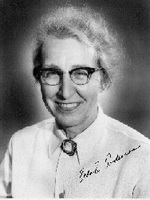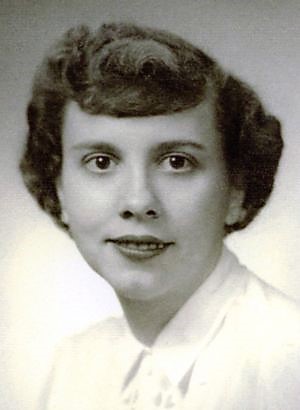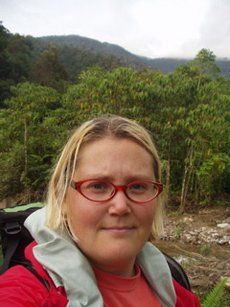Related Research Articles

Stanisław Marcin Ulam was a Polish mathematician, nuclear physicist and computer scientist. He participated in the Manhattan Project, originated the Teller–Ulam design of thermonuclear weapons, discovered the concept of the cellular automaton, invented the Monte Carlo method of computation, and suggested nuclear pulse propulsion. In pure and applied mathematics, he proved some theorems and proposed several conjectures.

Edwin Mattison McMillan was an American physicist credited with being the first to produce a transuranium element, neptunium. For this, he shared the 1951 Nobel Prize in Chemistry with Glenn Seaborg.

Emilio Gino Segrè was an Italian and naturalized-American physicist and Nobel laureate, who discovered the elements technetium and astatine, and the antiproton, a subatomic antiparticle, for which he was awarded the Nobel Prize in Physics in 1959 along with Owen Chamberlain.

John Hasbrouck Van Vleck was an American physicist and mathematician. He was co-awarded the Nobel Prize in Physics in 1977, for his contributions to the understanding of the behavior of electronic magnetism in solids.
Meteoritics is the science that deals with meteors, meteorites, and meteoroids. It is closely connected to cosmochemistry, mineralogy and geochemistry. A specialist who studies meteoritics is known as a meteoriticist.
The Presidential Early Career Award for Scientists and Engineers (PECASE) is the highest honor bestowed by the United States federal government on outstanding scientists and engineers in the early stages of their independent research careers. The White House, following recommendations from participating agencies, confers the awards annually. To be eligible for a Presidential Award, an individual must be a U.S. citizen, national, or permanent resident. Some of the winning scientists and engineers receive up to a five-year research grant.

Joseph William Kennedy was an American chemist who was a co-discoverer of plutonium, along with Glenn T. Seaborg, Edwin McMillan and Arthur Wahl. During World War II he was head of the CM Division at the Manhattan Project's Los Alamos Laboratory, where he oversaw research onto the chemistry and metallurgy of uranium and plutonium. After the war, he was recruited as a professor at Washington University in St. Louis, where he is credited with transforming a university primarily concerned with undergraduate teaching into one that also boasts strong graduate and research programs. He died of cancer of the stomach at the age of 40.
The Jackson School of Geosciences at The University of Texas at Austin unites the Department of Geological Sciences with two research units, the Institute for Geophysics and the Bureau of Economic Geology.

Darleane Christian Hoffman is an American nuclear chemist who was among the researchers who confirmed the existence of seaborgium, element 106. She is a faculty senior scientist in the Nuclear Science Division of Lawrence Berkeley National Laboratory and a professor in the graduate school at UC Berkeley. In acknowledgment of her many achievements, Discover magazine recognized her in 2002 as one of the 50 most important women in science.

Elda Emma Anderson was an American physicist and health researcher. During World War II, she worked on the Manhattan Project at Princeton University and the Los Alamos National Laboratory, where she prepared the first sample of pure uranium-235 at the laboratory. A graduate of the University of Wisconsin, she became professor of physics at Milwaukee-Downer College in 1929. After the war, she became interested in health physics. She worked in the Health Physics Division of the Oak Ridge National Laboratory, and established the professional certification agency known as the American Board of Health Physics.

Mary Tsingou is an American physicist and mathematician of Greek-Bulgarian descent. She was one of the first programmers on the MANIAC computer at Los Alamos National Laboratory and is best known for having coded the celebrated computer experiment with Enrico Fermi, John Pasta, and Stanislaw Ulam. This experiment became an inspiration for the fields of chaos theory and scientific computing, and was a turning point in soliton theory.
Sharon Mosher is an American geologist. She did her undergraduate work at University of Illinois Urbana-Champaign. After earning an MSc from Brown University, she returned to the University of Illinois to get her PhD in Geology in 1978. Since 2001 she has held the William Stamps Farish Chair at University of Texas, and, since 2009 she has served as the dean of the Jackson School of Geosciences at Texas. In 2013 she became the president of the American Geosciences Institute.
Rong Fu is a Chinese-American climatologist, meteorologist, researcher, professor, and published author with more than 100 articles, books, and projects detailing changes that occur in Earth's atmosphere and how they affect climate, seasons, rainfall, and the like. Fu has been invited to present over 115 presentations and seminars, and has administered more than 32 projects that received over 11 million dollars in funding. The focus areas of Fu's research are convection; cloud and precipitation processes and their role in climate; atmospheric transport in the upper troposphere and lower stratosphere; the interaction between the atmosphere and ocean and terrestrial vegetation; satellite remote sensing applications and retrievals; the interaction between rainfall rates and the rainforest in regions of the Amazon rainforest; and drought prediction in states across the United States, including California and Texas. She is currently a professor in the Atmospheric and Oceanic Sciences Department at UCLA and the associate director of UCLA's Joint Institute for Regional Earth System Science and Engineering. She is also an adjunct professor in the Jackson School of Geosciences at the University of Texas at Austin.
Deborah J. Jackson is an American physicist and Program Manager at the National Science Foundation, and a Fellow of the National Society of Black Physicists. She was the first African American woman to receive a Ph.D. in physics from Stanford University. She is an expert on "electromagnetic phenomena" with a research and development career that spans the full range of the electromagnetic spectrum from materials studies using hard x-ray wavelengths, to nonlinear optics and spectroscopy in the near-infrared, to the fielding of radio frequency instrumentation on deep space missions such as Cassini and Mars Observer.

Amy Townsend-Small is the director of the Environmental Studies Program as well as an associate professor in the Department of Geology and Geography at the University of Cincinnati.
Joanne Roth Wendelberger is an American statistician and a scientist at the Los Alamos National Laboratory.

Jennifer Eigenbrode is an interdisciplinary astrobiologist who works at NASA's Goddard Space Flight Center. She specializes in organic chemistry, geology, and organic bio-geochemistry of martian and ocean-world environments.
John Williams Valley is an American geochemist and petrologist. He is an expert on stable isotope geochemistry, especially as applied to understanding the evolution of the Earth's crust.
References
- 1 2 3 4 "Claudia Mora: Dean". www.jsg.utexas.edu. Retrieved 2022-04-09.
- ↑ Reporter, Los Alamos (2019-12-03). "Claudia Mora Appointed Dean Of Jackson School Of Geosciences At The University Of Texas-Austin". Los Alamos Reporter. Retrieved 2021-10-12.
- ↑ "GSA News Releases - Contact". www.geosociety.org. Retrieved 2021-10-12.
- ↑ "Mora Named Distinguished Alumna for UW, Madison". Los Alamos National Laboratory. 2018. Retrieved 2021-10-12.